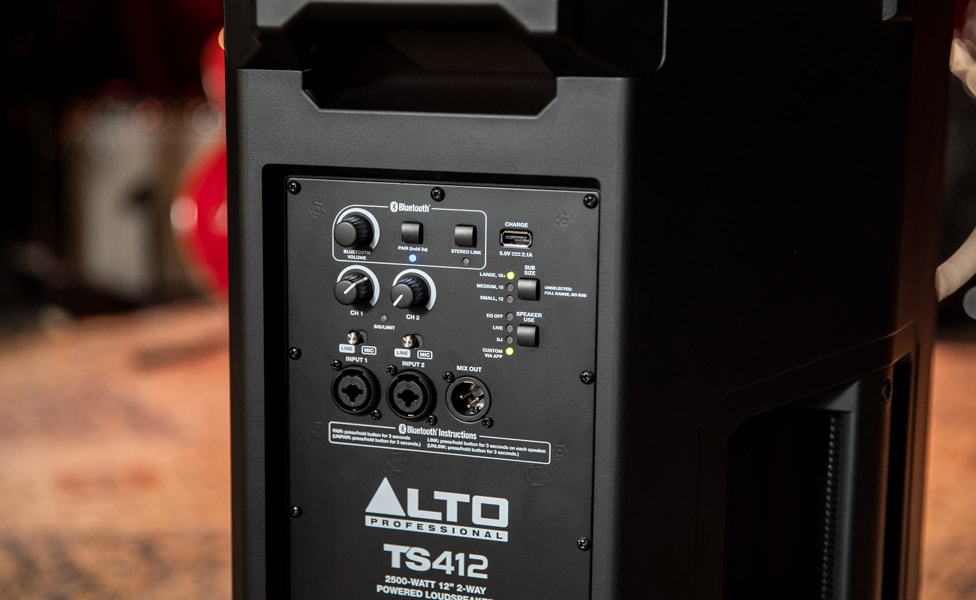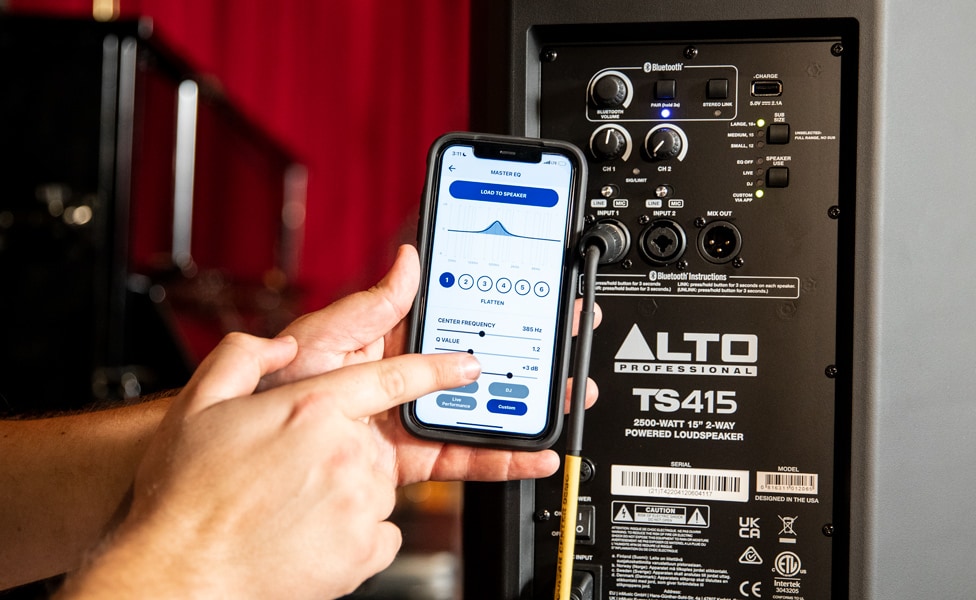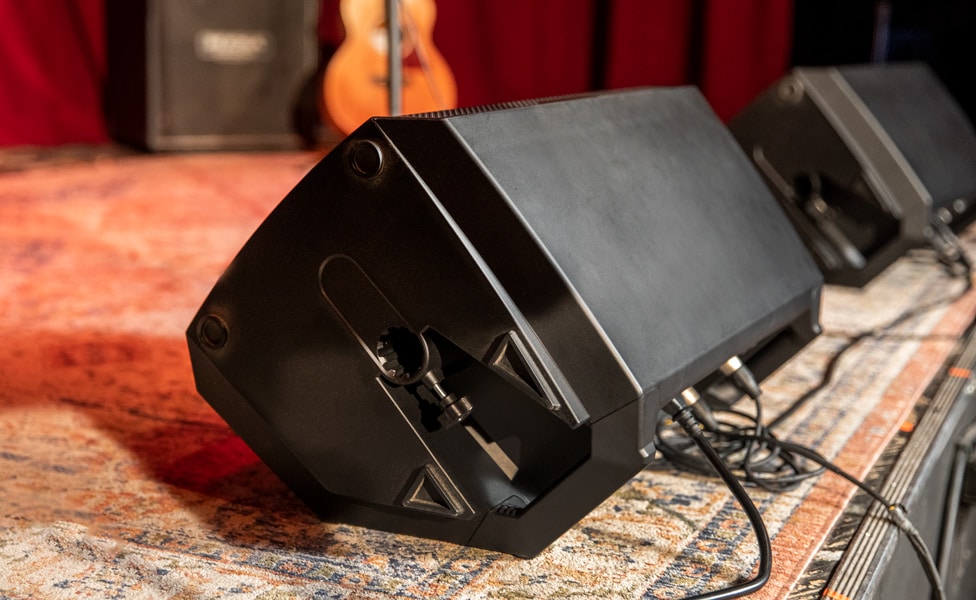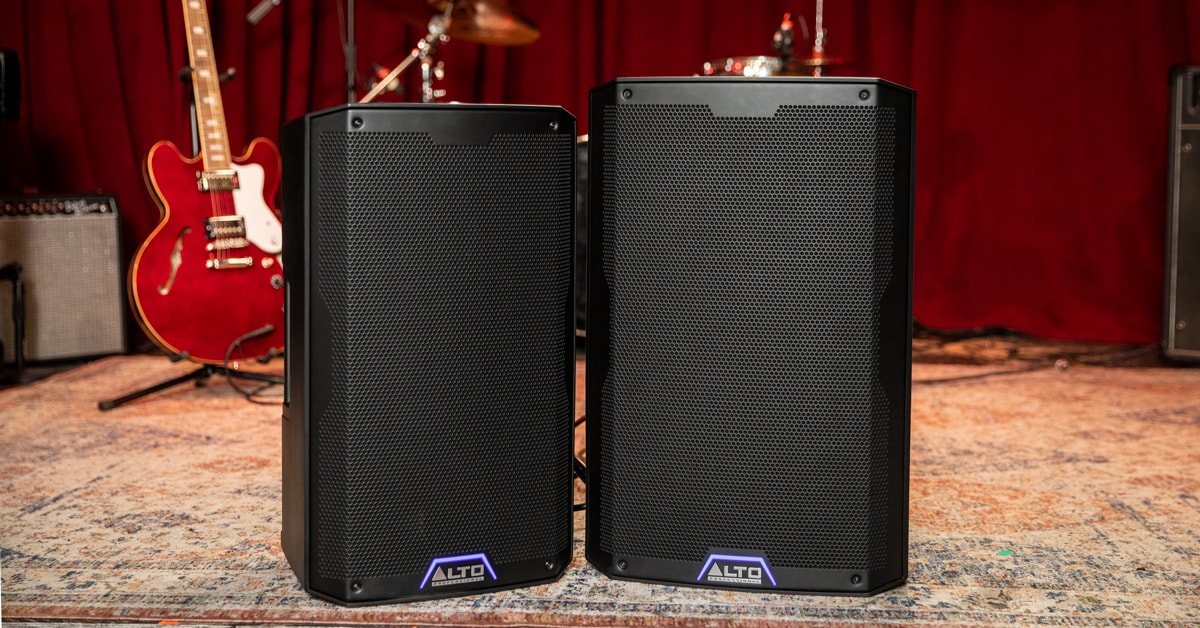Alto Professional has earned a reputation as a source for affordable pro audio gear that over-delivers on performance. Their TrueSonic series of powered loudspeakers has become a common sight at small venues and rehearsal spaces across the country. The new fourth-generation versions of the TrueSonic line add impressive new features—DSP, Bluetooth and app control, plus an impressive wireless stereo link—that will make these even more of a go-to choice for musicians and venues looking to up their game without emptying their bank account. We were fortunate to have a chat with Alto's director of product development, Nathan Butler, who gave us the lowdown on the new TrueSonic 4 (TS4) series.
The TS4 is the fourth generation in the TrueSonic line-up. Can you give us a little bit of the history leading up to it?
Nathan Butler: As you said, this is the fourth generation. The TS series has been around a while. The goal with any of the TrueSonic products is to offer the customer a high value. We're trying to get really good sound quality and exceptional feature sets at an affordable price point. TS4 carries on that tradition while bringing a lot of new features to the product line, and it’s definitely long-anticipated. TS3 came out in 2018. It's now 2022. Obviously, there’s been a lot going on over the past few years, from the pandemic to parts and chip shortages. But what we're delivering now really extends the tradition and heritage of the TrueSonic line. We packed a lot of good features into TS4 that we think customers are going to be excited about.
A lot has changed in the world of technology since TS3 came out in 2018. As you started the TS4 project, what were the key features or technologies you felt you needed to deliver?
I think the big three were digital signal processing (DSP), [mobile] app control and Bluetooth. Those all kind of go hand-in-hand. There are some significant benefits to that, particularly the DSP side, that extend past the obvious and were really a big leap forward.

One of the specs touted in the TS4 is the improvement in clarity. Can you tell us what went into that, and what that will mean to the average musician?
That's a nice segue from the DSP that I just mentioned. Earlier models existed in the analog realm, and there's a lot you can do with analog circuitry and analog EQ. But, as everybody knows, the digital world offers so much more control over other things—and that’s not just EQ, with your typical cuts and boosts. As designers, we can really get much more creative with dynamic filtering. DSP also offers much more control over limiting, which gives us the ability to deliver higher SPL levels, in addition to much more control over power limitation to the transducers. So, as engineers, it really opens a whole other set of tools to get the most performance out of the loudspeakers as possible.
Speaking to that DSP, what’s going to be available to the users as far as what they can do with the app, versus the more invisible stuff going on in the background?
Well, much the same way automobile manufacturers don't provide dials and knobs on the dashboard to adjust air/fuel mixture ratio, there’s a bunch of under-the-hood stuff in TS4 that we don’t give access to. The stuff that’s inherent to the performance of the loudspeaker is locked down.
Now, when we went about designing the app, we really wanted it maximize convenience. We needed to offer the ability for the user to access the features of the loudspeaker without having to be standing around the backside of it. So, a lot of what you'll see in the app is just a parallel with the controls and features on the back panel. The one core addition to the features within the app is the ability for the user to dial in a custom EQ curve. So, we give the user three presets—Flat, Live and DJ—which cover the typical use case scenarios, as well as a user slot so they can dial in any number of EQ curves within the app and then recall one of those for their preferred settings.

So, at the very least, Bluetooth offers users the ability to connect the speaker(s) with the Alto app. What other functionality does it bring?
The big thing is that you can do TWS, or True Wireless Stereo, linking. You can get the true stereo split, left and right, from your Bluetooth signal, which can be from your phone, your laptop, etc., and you can use it with two TS4 loudspeakers. So, the way that works is that the left speaker would pair to your Bluetooth device. Once that pairing is established, the user would then stereo link a second TS4 loudspeaker to get the right channel. Now, a quick note, if there’s no second speaker, the first speaker would just get a mono sum of the Bluetooth signal. As soon as you link that second speaker, now you're getting that true wireless stereo.
Was there any significant difference on the design front as far as what went into the app versus what was available on the back of the TS4 loudspeakers?
We recognize that, fundamentally, this is a loudspeaker. This is a tool that's meant to complete a performer's performance. Whether you're a DJ, a musician or a sound engineer, this is something that's needed to get the job done. So, to that end, we wanted to make sure that the app doesn’t get in the way. We designed it to be something that offered convenience but wasn’t necessary for the use of the speakers. Frankly, if a user is dialing in a custom EQ from the app, that custom EQ gets stored on the TS4, where it can be recalled. At that point, there’s no reason for the user to ever have to use their phone again, unless they want to tweak that EQ curve again. And that’s really great if you’re playing in a consistent location, or with a consistent sound, from one gig to the next.

Stepping back a little, what are the things that don’t necessarily make their way into a spec sheet, that the average user will appreciate?
I'd have to say the sound quality. The fact that this had a four-year development cycle, for a variety of outside reasons that we mentioned earlier, really allowed us to re-think these from the ground up. There's nothing left over from the previous TS series. It has an upgraded amplifier, all the DSP under the hood, and even the cabinet is a completely different shape.
If you look closely, you’ll notice we've put a symmetric trap angle on the cabinet, which facilitates putting them on their side to use as floor monitors. So, when you put these on the floor, they're going to be much more stable because that monitor surface is much larger.
Now going back to the sound quality, we feel that the DSP really offers you an improvement in overall performance that sounds leaps and bounds better than TS3. They get louder. But to your point, that may not be abundantly obvious on the spec sheet. When you sit down and listen to a speaker, and listen to it at high level, there's no substitute for that. There's no substitute for listening and using it.
How would you describe the overall sound of the TS4? Was there a certain quality you were going for in the voicing? Did you have DJs in mind, for example? Bands? Singer-songwriters?
I'd say clear and impactful. To your question, one of the reasons for the various preset sound modes we put on there, as well as the ability for the user to dial in their own EQ, is that TrueSonic 4 doesn’t have a single sound. There are those three different voicings to cover those different use cases, and then a fourth if the user choses to do so.
In general, one of the key design criteria for a loudspeaker is to color the sound as little as possible. Now, I’m not suggesting that it's a blank slate or that the response is in flat, per se. One of the things you really focus on, for example, is time response, AKA phase response. Ensuring that all the signals arrive at your ear when they're supposed to is key in making a loudspeaker sound clear. This keeps the original sound unaltered, regardless of how much you may boost or cut a specific frequency. If your time response, or phase response, isn’t pure, then you’re not typically going to sound very good.
So, keeping that time response extremely pure and extremely clean was really a key focus for us when we were designing, and I think your customers are really going to appreciate that when they set these up at their next gig.








